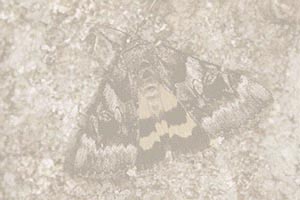 Catocala electilis
Catocala electilis
Walker, 1858
The largest North American Catocala, endemic to Mexico,
thought for years to have declined/contracted in range. Adults have recently
shown up on iNaturalist with regularity in central Mexico, in an area
roughly triangulated by the cities of Guadalajara, San Luis Potosi and Mexico City / Puebla
(map dots here for Texas and Arizona represent 4
historic [late 1800s to early 1900s] specimens in institutional collections, whose labels are of
debatable provenance). The species is a member of the Salicaceae-feeding clade, with an unknown life history, but... drum roll...
in our opinion, iNaturalist can proclaim to have resolved the riddle of the electilis larva! There are over 100 adult
records now for electilis from Mexico, and only 18 adult records from Mexico for all other Salicaceae-feeders
combined:
amatrix (n=1),
californica (n=3),
irene (n=2),
jessica (n=4),
junctura (n=8).
Sixteen of these records are from northern Mexico, the other 2 are singletons
of jessica and junctura near the Durango/Zacatecas border; all 18 records
are well outside the core range of electilis.
The 3 larvae below in the image and
iNaturalist links are all: (a) from within 100 km of Mexico City, (b) quite comparable in pattern/morphology,
(c) depict a large Salicaceae-feeding species, and (d) are unlike larvae of the five species above
whose ranges extend into Mexico. Notable is the thick black coronal band circumnavigating the head capsule,
not routinely
expressed to this degree except in
unijuga.
Taking all the aformentioned evidence into account, there is essentially no doubt these 3 iNaturalist observations represent
electilis, and we hope and indeed expect that someone in Mexico will encounter another, document the foodplant(s), and rear
out an adult(s) to seal the deal!
iNaturalist 258621109,
iNaturalist 197948485,
iNaturalist 61840929

|


